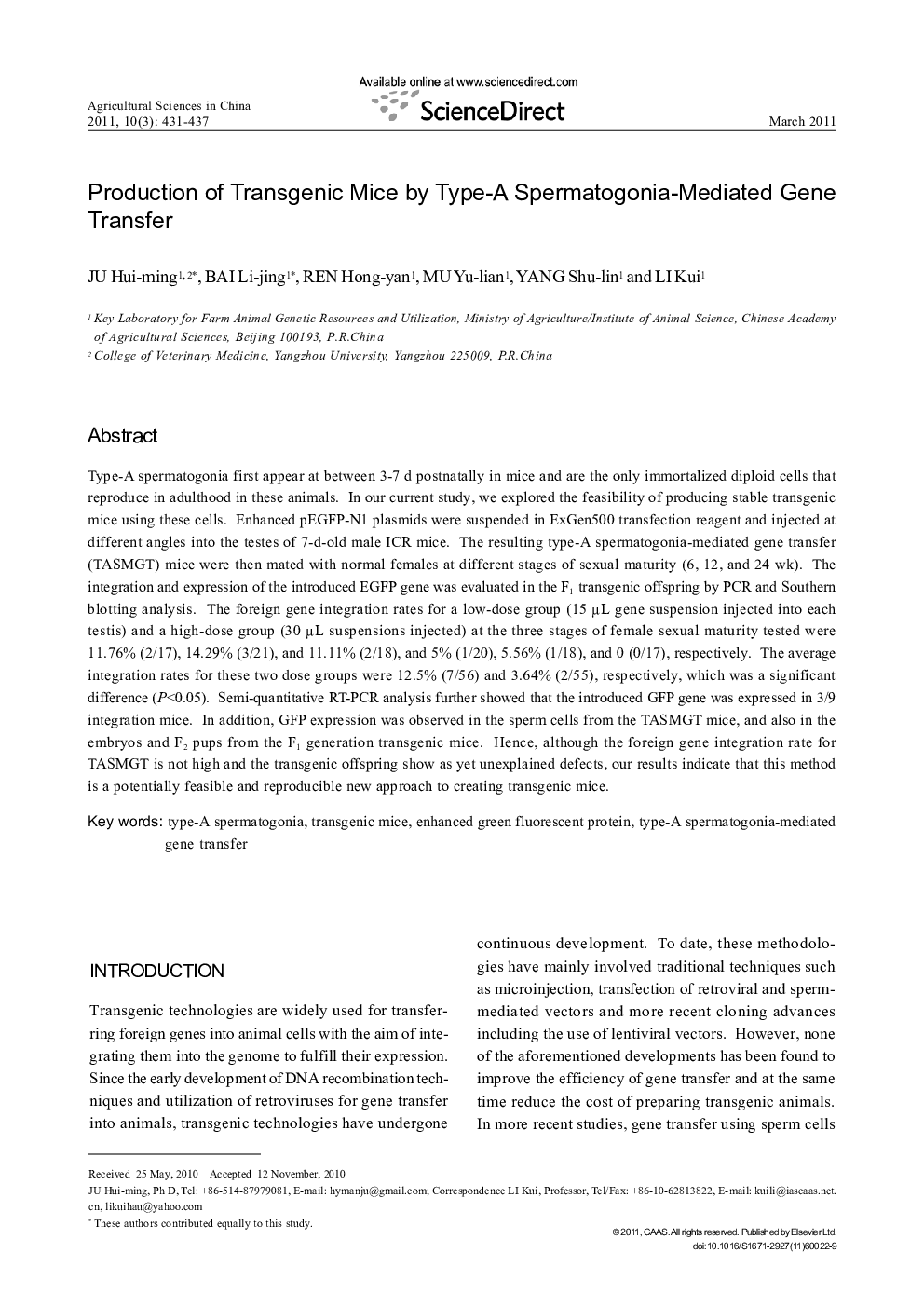| کد مقاله | کد نشریه | سال انتشار | مقاله انگلیسی | نسخه تمام متن |
|---|---|---|---|---|
| 4490009 | 1317748 | 2011 | 7 صفحه PDF | دانلود رایگان |

Type-A spermatogonia first appear at between 3-7 d postnatally in mice and are the only immortalized diploid cells that reproduce in adulthood in these animals. In our current study, we explored the feasibility of producing stable transgenic mice using these cells. Enhanced pEGFP-N1 plasmids were suspended in ExGen500 transfection reagent and injected at different angles into the testes of 7-d-old male ICR mice. The resulting type-A spermatogonia-mediated gene transfer (TASMGT) mice were then mated with normal females at different stages of sexual maturity (6, 12, and 24 wk). The integration and expression of the introduced EGFP gene was evaluated in the F1 transgenic offspring by PCR and Southern blotting analysis. The foreign gene integration rates for a low-dose group (15 μL gene suspension injected into each testis) and a high-dose group (30 μL suspensions injected) at the three stages of female sexual maturity tested were 11.76% (2/17), 14.29% (3/21), and 11.11% (2/18), and 5% (1/20), 5.56% (1/18), and 0 (0/17), respectively. The average integration rates for these two dose groups were 12.5% (7/56) and 3.64% (2/55), respectively, which was a significant difference (P<0.05). Semi-quantitative RT-PCR analysis further showed that the introduced GFP gene was expressed in 3/9 integration mice. In addition, GFP expression was observed in the sperm cells from the TASMGT mice, and also in the embryos and F2 pups from the F1 generation transgenic mice. Hence, although the foreign gene integration rate for TASMGT is not high and the transgenic offspring show as yet unexplained defects, our results indicate that this method is a potentially feasible and reproducible new approach to creating transgenic mice.
Journal: Agricultural Sciences in China - Volume 10, Issue 3, March 2011, Pages 431-437